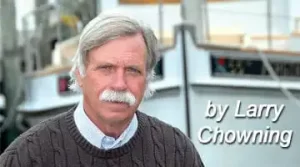 Leading up to the Battle of Yorktown, the many ships coming and going up and down the Chesapeake Bay must have been concerning to the uninformed citizens living along the shoreline. The increased boat traffic was an indication of some type of major activity coming.
Leading up to the Battle of Yorktown, the many ships coming and going up and down the Chesapeake Bay must have been concerning to the uninformed citizens living along the shoreline. The increased boat traffic was an indication of some type of major activity coming.
In September 1781, lights at night from vessels moored at the mouth of the Piankatank River could be seen from both the Middlesex and Gloucester counties sides and as far away as Lancaster County. Mathews County did not separate from Gloucester until 1791, so the south bank of the Piankatank was all Gloucester then.
Certainly, residents were hoping it was not more British quartermasters or troops, as throughout the war, the English plundered smokehouses, chicken houses and households of area residents.
Hallelujah! It was not the British. On Sept. 12, 1781, Colonel Anthony Thornton Jr. of Caroline County was ordered by Virginia Governor Thomas Nelson Jr. to procure as much flour as possible and bring it by boats to the mouth of the Piankatank River. Nelson wrote, “A large body of troops being expected in a few days down by the bay under his excellency General George Washington, which will probably land in Gloucester. I beg that you will have all the flour (for his army) you can procure at Port Royal or any part of Caroline or the adjacent county, sent in vessels round into the Piankatank, with all possible dispatch.
“I have taken liberty of giving you this trouble from a conviction that your zeal for this country’s good will incline you to undertake a business so serviceable to it and that your influence will enable you to execute it with a greatest success.”
The many lights shining at the mouth of the Piankatank on that dark night in 1781 indicated that the governor’s inclination towards Anthony Thornton Jr. was correct and although the history books rarely speak of him, he was an American hero who played a role, along with many others, in the surrender of the British at Yorktown on Oct. 19, 1781.
It Happened Here in Rivah Country!


 Leading up to the
Leading up to the 


